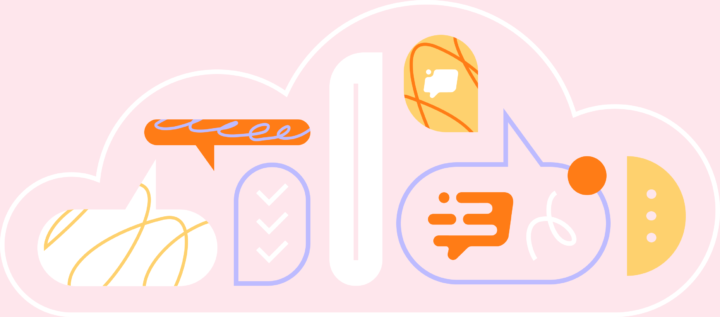What is CAC (Customer Acquisition Cost)? Understanding the basics

Introduction
In today’s competitive marketplace, understanding Customer Acquisition Cost (CAC) is essential for businesses seeking sustainable growth and profitability. This metric not only reflects the total investment required to attract new customers but also serves as a critical indicator of marketing efficiency and financial health.
With varying averages across industries, businesses must navigate the complexities of CAC calculations and their implications on overall strategy. By exploring effective methods to calculate and optimize CAC, as well as the relationship between CAC and Customer Lifetime Value (LTV), organizations can make informed decisions that drive success.
This article delves into the intricacies of CAC, offering insights into best practices for reducing acquisition costs and enhancing marketing effectiveness in a rapidly evolving landscape.
Defining Customer Acquisition Cost (CAC): An overview
Customer acquisition cost (CAC) is a critical metric for any business. It tells you how much you’re spending to bring in a new customer. This isn’t just about the ads you run or the sales team’s salaries; it’s the whole package. Think of it like filling a bucket with water — every drop counts. In the Transportation & Logistics sector, the average CAC is $510. Break it down further, and you’ll see organic CAC at $436 and inorganic CAC at $732.
Now, why does this matter? The average conversion rate across 25 B2B industries provides insight into how well you’re doing with your CAC. Understanding this cost is essential because it acts as a barometer for your marketing effectiveness and overall financial health. Ideally, your CAC should be about one-third of your customer’s lifetime value (LTV). If that’s the case, you’re on the right track — sustainable and profitable.
A lower CAC means you’re nailing the customer acquisition process. But if your CAC is high, it’s a red flag. It suggests inefficiencies that need your attention. Industry experts agree: you need to eliminate friction points in your process to boost conversion rates.
For transportation and logistics companies, one effective strategy to lower CAC is investing in longer-form content. This isn’t just fluff; it’s a practical application of these concepts that can drive real results. So, take a hard look at your CAC, streamline your processes, and watch your business thrive.

How to calculate Customer Acquisition Cost: Key formulas and methods
Calculating your Customer Acquisition Cost (CAC) is a must for any organization looking to sharpen its marketing strategies. It’s simple math, but it packs a punch. The formula is straightforward:
CAC = Total Cost of Sales and Marketing / Number of New Customers Acquired.
Let’s break it down. Say you invest $100,000 in sales and marketing over a certain period, and you bring in 1,000 new customers. Your CAC? That’s $100. This number is vital. It tells you not just how much you’re spending, but how effective your different acquisition channels are.
To make better decisions, dig deeper into your CAC by channel. Think about where your dollars are going — social media, paid search ads, direct sales. If social media gives you a CAC of $50 and paid search ads hit you with $100, the choice is clear: pour more resources into social media.
Now, let’s talk benchmarks. In 2024, the average Cost Per Install (CPI) for Instagram ads sits between $1.75 and $4.50. This gives you a solid reference point for evaluating your CAC in social media.
Industry experts are also weighing in. Noorisingh Saini, Global Content Marketing Manager at Amplitude, points out that executing marketing strategies demands a keen understanding of market dynamics to measure results effectively.
And here’s a real-world example: In the mobile app space, the average price of in-app purchases for iOS jumped 40% from July 2021 to July 2022, thanks to Apple’s Tracking Transparency policies. This shift illustrates how market dynamics can impact your customer acquisition strategies across platforms.
Understanding CAC isn’t just a number — it’s a strategic tool. For organizations that want to boost their customer acquisition efforts in a competitive landscape, mastering this calculation is essential.

The importance of CAC in business strategy and financial health
Customer acquisition cost (CAC) is not just a metric; it’s the backbone of your business strategy and a key indicator of financial health. If you look across industries, the average CAC shows a wide range. For instance:
- Legaltech sits at about $299
- Commercial insurance is a hefty $593, according to FirstPageSage
This disparity underscores the importance of understanding and managing your CAC. It’s essential for making smart decisions about where to allocate resources.
When you optimize your CAC, you’re setting your organization up for success. It’s about ensuring that your marketing and sales efforts aren’t just spending money, but actually generating profitable returns. In fact, 57% of advertisers see client acquisition as the top priority in their budget. If you notice your CAC creeping up, it’s time to take a hard look at your promotional strategies.
Let’s get practical. Tools like those from Amplitude — think funnel and cohort analysis, user path mapping, and A/B testing—can significantly improve how you manage your CAC while keeping customer quality intact. The need to tailor your marketing budget is further illustrated by the stark differences in average CAC across sectors:
- E-commerce averages around $70
- FinTech skyrockets to $1,450
These numbers aren’t just stats; they’re a call to action. Companies must adopt industry-specific strategies to effectively manage CAC and ensure they remain financially viable.

Understanding the relationship between CAC and Customer Lifetime Value (LTV)
Understanding the relationship between Customer Acquisition Cost (CAC) and Customer Lifetime Value (LTV) is essential for any business that wants to thrive. Think of LTV as the total revenue a customer will generate for you over the life of their relationship with your company. It’s your golden ticket. Now, there’s a rule of thumb: your CAC should ideally be no more than one-third of your LTV. This keeps your acquisition costs in check relative to the revenue you expect to pull in.
Why is this balance so critical? If your CAC starts to exceed your LTV, you’re on shaky ground. As industry experts point out, you’re flirting with disaster. Samuel Kellett puts it bluntly:
- “Even if the company becomes one of the most popular brands in the world, it can’t sustain a model where the cost to acquire a customer is greater than the value they offer.”
If your LTV: CAC ratio is above 5:1, you might be leaving money on the table. That’s a clear sign of potential growth you’re not tapping into.
By digging into the interplay between CAC and LTV, businesses can gauge their overall health and pinpoint where they need to improve. Optimize these metrics, and you’re not just boosting profitability; you’re laying the groundwork for long-term sustainability. Keep a close eye on these numbers, using SaaS dashboards to extract actionable insights. In the world of business, knowledge is power — especially when it comes to knowing what each customer is really worth.

Strategies for reducing Customer Acquisition Cost: Best practices
Reducing customer acquisition cost (CAC) isn’t just a nice-to-have; it’s a must for any organization that wants to boost profitability. With the average CAC for B2B SaaS sitting at $239, companies need to get serious about their strategies. Here are four practical approaches to tackle this challenge head-on.
Leverage technology: Think of technology as your best friend in the battle against high CAC. Tools like Dashly can automate your user communicaitons and power them up with personalizlations. This isn’t just about saving time; it’s about improving your conversion rates and eventually boosting revenue. When you streamline lead management and categorize leads effectively, you cut down on the costs of acquiring new clients. Plus, with Dashly’s ability to track user activity, you can make smarter decisions that keep your CAC in check. Khalid Saleh, CEO of Invesp, puts it simply: using technology the right way can be a game changer.
Targeted promotion: Not all customers are created equal. Focusing your promotional efforts on specific segments that are more likely to convert can drastically improve your campaign effectiveness. The numbers don’t lie: you have a 60-70% chance of selling to an existing client, versus just 5-20% for new clients. This makes targeted marketing not just smart, but essential.
Content marketing: Providing valuable content that addresses your clients’ needs can attract potential customers without breaking the bank on paid ads. This organic approach not only builds trust but also reduces your dependency on costly promotional tactics.
Referral programs: Your existing clients can be your best salespeople. Encouraging them to refer new customers can significantly cut acquisition costs. Referrals typically yield a conversion rate of 60-70%, which is miles ahead of what you’d get from new clients.
Before adopting Dashly, many clients struggled with long response times, low service level agreement (SLA) compliance, and wasted time on unqualified leads. This was particularly detrimental when it came to selling premium packages.
The e-commerce landscape isn’t getting any easier. Customer acquisition costs have surged by 60% over the past five years. This trend highlights the urgent need for companies to innovate and refine their strategies in a crowded market. By embracing these approaches and utilizing advanced solutions like Dashly, businesses can not only improve their sales effectiveness but also optimize their customer acquisition costs. Remember, in this game, every dollar counts.

Conclusion
Understanding and managing Customer Acquisition Cost (CAC) is crucial for any business aiming to thrive in today’s competitive landscape. The article has outlined the importance of accurately calculating CAC, emphasizing that it encompasses all expenditures related to attracting new customers. By analyzing CAC across various sectors, businesses can identify industry-specific benchmarks and tailor their strategies accordingly.
Effective CAC management not only aids in evaluating the efficiency of marketing endeavors but also highlights the critical relationship between CAC and Customer Lifetime Value (LTV). Striving for a CAC that remains within one-third of the LTV is essential for sustainable growth. This balance ensures that customer acquisition efforts yield profitable returns, allowing organizations to invest wisely in their marketing strategies.
To reduce CAC, businesses are encouraged to adopt best practices such as:
- Leveraging technology
- Targeting specific customer segments
- Utilizing content marketing
- Implementing referral programs
These strategies can significantly lower acquisition costs while improving overall marketing effectiveness, ultimately leading to enhanced profitability.
In summary, a thorough understanding of CAC, coupled with strategic optimization efforts, positions businesses for long-term success. By continuously monitoring and adjusting their approaches, organizations can navigate the complexities of customer acquisition, ensuring sustainable growth and financial health in an ever-evolving marketplace.





![Growth Marketing, o que é? O guia definitivo [explicado por um hacker de crescimento]](https://www.dashly.io/blog/wp-content/uploads/2023/04/The-ultimate-guide-to-growth-marketing-explained-by-a-growth-hacker-720x317.png)
![10-step Guide on How to Create a Chatbot for your Website [Build without code]](https://www.dashly.io/blog/wp-content/uploads/2022/06/How-to-create-a-chatbot-to-automate-conversations-with-your-website-visitors-720x317.png)
![Top 10 Best Custom Chatbot Platforms for your website [+AI]](https://www.dashly.io/blog/wp-content/uploads/2020/06/cover-1-720x308.jpg)
![21 proven tools for your 2025 marketing tech stack [Recommended by market experts]](https://www.dashly.io/blog/wp-content/uploads/2022/08/martech-stack-999-720x317.png)